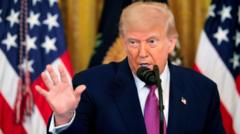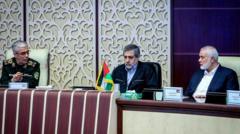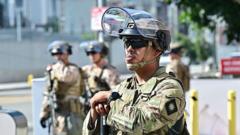Iran's foreign minister warns that U.S. involvement in the ongoing conflict could have dire consequences for the region, as strikes on nuclear facilities mark a dangerous escalation in hostilities.
Iran Confronts New Reality as U.S. Strikes Nuclear Sites

Iran Confronts New Reality as U.S. Strikes Nuclear Sites
Tensions escalate between Iran and the U.S. following military action against Iranian nuclear facilities, prompting fear of broader conflict.
Iran's leadership faces a significant dilemma following recent U.S. strikes on its nuclear facilities. The situation, which has been characterized by longstanding hostility between Iran and the United States, has reached a critical juncture. On June 22, 2025, Iranian Foreign Minister Abbas Araghchi stated that a decision by the U.S. to escalate its involvement in the conflict—initially limited to supporting Israel—could lead to dire repercussions for all parties involved.
During a meeting of the Organization of Islamic Cooperation in Istanbul, Araghchi sought to garner support from regional leaders, emphasizing the potential danger of U.S. military action. Despite previous attempts to persuade the Trump administration against further conflict in the Middle East, Iranian officials confirmed that their hopes were unfounded.
In an official statement, Iran’s Atomic Energy Organization condemned the U.S. strikes, asserting that the attacks on key nuclear sites such as Fordo, Natanz, and Isfahan constituted a violation of international law. This military escalation has intensified fears of a wider regional conflict, as the rhetoric surrounding the confrontation becomes increasingly charged.
With diplomatic efforts now thwarted, the Iranian government must navigate a precarious path as tensions escalate between Tehran and Washington. The outcome of this latest conflict remains uncertain, but the implications for the Middle East could be profound if hostilities continue to escalate.























